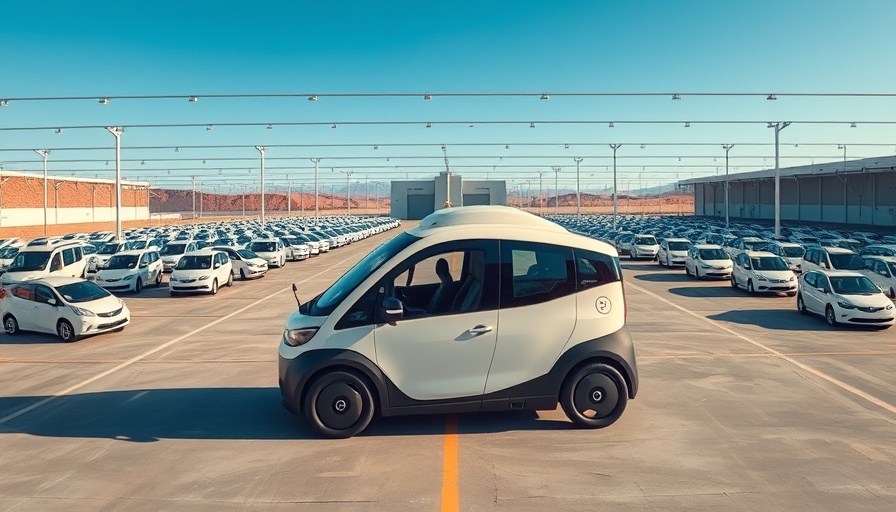
Waymo's Fleet Expansion: A Step Toward Autonomous Futures
Waymo, Alphabet's self-driving technology company, continues to break ground in the automaking industry with its latest announcement about ramping up robotaxi production. With a newly constructed factory in Arizona, Waymo is set to significantly increase its fleet of commercial robotaxis, paving the way for the future of autonomous vehicles. This strategic move not only positions the company as a leader in the rapidly evolving tech industry but also demonstrates a commitment to meeting the growing demand for taxi services that require minimal human intervention.
The Jaguar I-Pace: Key to Waymo's Mission
At the heart of Waymo's ambitions are its Jaguar I-Pace electric vehicles, which form a crucial part of its autonomous offering. As of now, Waymo operates over 1,500 of these vehicles for commercial purposes, with plans to increase this fleet to more than 2,000 with the new production facility. The collaboration with Magna ensures an efficient assembly process, reinforcing the idea that Waymo’s efforts are not just about technology but also about building a formidable production capacity.
A Strategic Location for Optimal Testing
Choosing Mesa, Arizona for the factory site was a well-calculated decision for Waymo. The region not only offers a supportive climate for extensive testing but also situates the facility close to other major markets like San Francisco and Los Angeles. This proximity to key locations strengthens the operational real estate of Waymo and enhances its ability to adapt to diverse driving environments swiftly. The consistent weather in this area serves as a perfect backdrop for validating the vehicles’ self-driving systems before they hit the streets with passengers.
Innovation in Production Processes
Waymo has expressed excitement over an innovative production-to-validation process implemented at the new facility. This new methodology reportedly allows vehicles to go directly from production to public service in less than thirty minutes. For cities receiving shipments, vehicles can begin operating in hours, a remarkable feat that underscores the company’s efficiency. This rapid deployment ensures that Waymo can meet the immediate demand for autonomous taxi services as acceptance and interest grow.
The Future of Autonomous Vehicles: What Lies Ahead?
As Waymo ramps up its efforts, this raises pivotal questions about the future of urban mobility. Industry experts predict that the expansion of robotaxi services could revolutionize transportation, reduce traffic congestion, and lower emissions in urban centers. The push for autonomous vehicles aligns with a global movement toward greener technologies, especially as cities seek innovative solutions to longstanding transportation issues. Furthermore, users may see more diverse vehicle platforms integrated with Waymo’s advanced autonomous systems, including the Zeekr RT later this year.
Diverse Perspectives on Autonomous Technology
However, not everyone is on board with the rapid shift toward automation. Critics highlight concerns over safety, job displacement, and ethical implications of relying heavily on algorithm-driven transport. Numerous discussions revolve around the necessary legislative frameworks to ensure public safety and trust as these technologies proliferate in our communities. It is crucial for stakeholders in the tech industry, local governments, and the communities they serve to examine the impacts of these innovations holistically.
Conclusion: How This Affects You
Understanding the implications behind Waymo’s advancements can empower consumers and citizens alike. Increased availability of robotaxi services may lead to lower transportation costs and improved accessibility in various urban areas. Additionally, as the debate over autonomous vehicles continues, staying informed on these developments helps shape your perspective and participation in what surely will be a transformational era in transportation. Are you ready to embrace the future of mobility?
 Add Row
Add Row  Add
Add 



Write A Comment